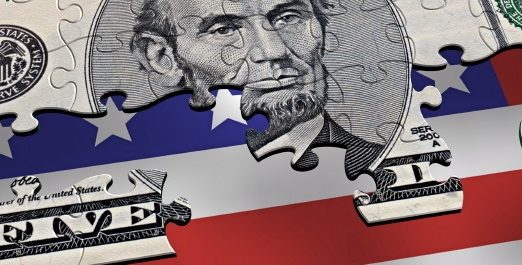First quarter U.S. GDP below estimates at 1.6%; report still shows ‘underlying strength’
by April 25, 2024 1:53 pm 275 views

The advance estimate of U.S. first-quarter real gross domestic product (GDP) grew at an annual rate of 1.6%, and the fourth quarter GDP was revised up to 3.4% from 3.3%, according to Thursday’s (April 25) report from the U.S. Bureau of Economic Analysis.
The first quarter advance estimate, which will be revised on May 30, was below the estimate range of 2.2% and 2.5%.
The BEA report noted that “the increase in real GDP primarily reflected increases in consumer spending, residential fixed investment, nonresidential fixed investment, and state and local government spending that were partly offset by a decrease in private inventory investment.”
According to the BEA report, service-sector spending boosted consumer spending gains, with a decline reported in consumer spending on goods. Spending in health care, financial services and insurance were the leading growth areas in service-sector spending. Consumers reduced spending in the quarter on autos, gasoline and other energy products.
Dr. Michael Pakko, chief economist and state economic forecaster at the University of Arkansas at Little Rock’s Institute for Economic Advancement, said the advance estimate is below expectations, but the overall U.S. economy is strong.
“The 1.6% growth rate is somewhat lower than expected, but the breakdown of components suggests underlying strength. Growth was attributable to consumer spending (particularly on services), domestic investment (both residential and nonresidential fixed investment) and in Government spending (particularly state and local),” Pakko noted in an analysis provided to Talk Business & Politics. “The weak spots were a decline in business inventories and an increase in imports (which subtracts from GDP). Lower business inventories can often forebode future production increases to replenish, and strong import growth suggests spending momentum. Moreover, both of those components are the most likely to be revised from the figures reported in this ‘advance’ estimate.”
Greg Kaza, an economist and executive director of the Arkansas Policy Foundation, was direct in his response.
“The most concise way to summarize today’s report: Inflation continues to weigh on the U.S. economy,” Kaza said.
According to the BEA, increases in state and local government spending were primarily the result of higher pay for state and local government employees. Inventory investment declines primarily reflected decreases in wholesale trade and manufacturing.
“Compared to the fourth quarter, the deceleration in real GDP in the first quarter primarily reflected decelerations in consumer spending, exports, and state and local government spending and a downturn in federal government spending. These movements were partly offset by an acceleration in residential fixed investment. Imports accelerated,” the BEA noted.
Current-dollar personal income increased by $407.1 billion in the first quarter, compared with an increase of $230.2 billion in the fourth quarter. Disposable personal income increased $226.2 billion, or 4.5%, in the first quarter, compared with an increase of $190.4 billion, or 3.8%, in the fourth quarter. Real disposable personal income increased 1.1%, compared with an increase of 2%.
Personal savings was $755.7 billion in the first quarter, compared with $815.5 billion in the fourth quarter. The personal saving rate – personal saving as a percentage of disposable personal income – was 3.6% in the first quarter, compared with 4% in the fourth quarter.
Also on Thursday, the U.S. Bureau of Labor Statistics reported that private sector gross job losses between June and September 2023 totaled 7.8 million, down 37,000 jobs from the prior quarter.
“Over this period, gross job gains from opening and expanding private-sector establishments were 7.6 million, a decrease of 561,000 jobs from the previous quarter. The difference between the number of gross job gains and the number of gross job losses yielded a net employment decline of 192,000 jobs in the private sector during the third quarter of 2023,” noted the BLS report.
